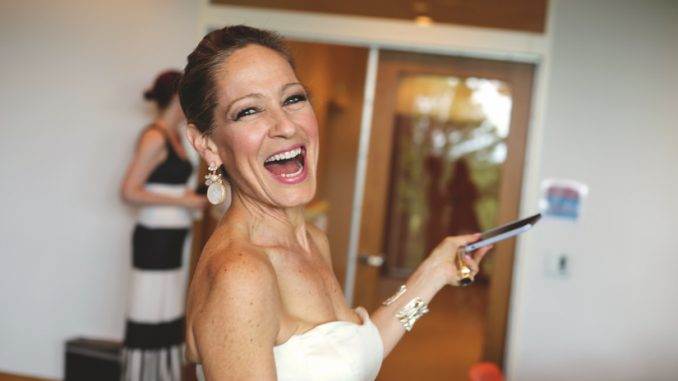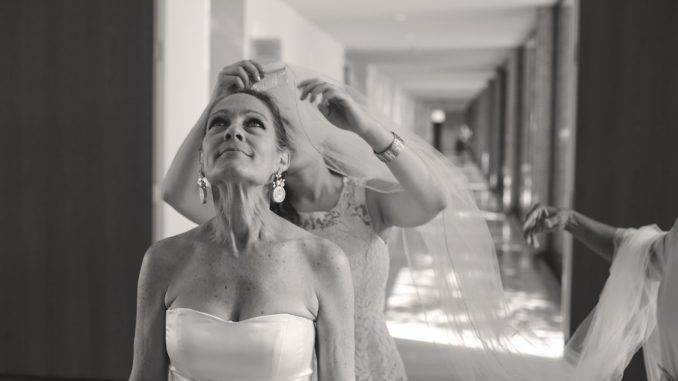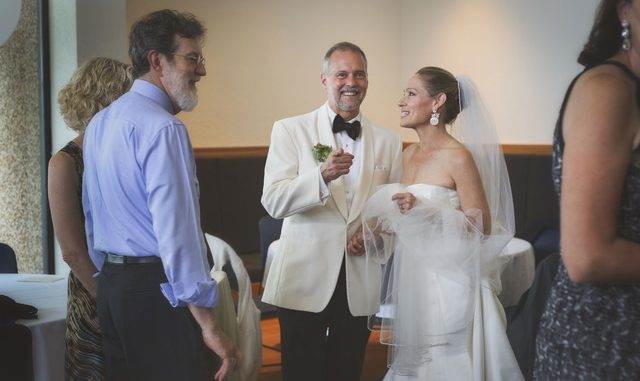Ashley Kozanda had surfed Pinterest for wedding photography tips. As a beginning photographer from the Chicago area, she was looking for ways to get into the business. Then she came across a tip about ‘second shooting’, which piqued her curiosity.
It is estimated that couples today pay on average $2,783 for a photographer for their wedding, according to The Knot 2016 Real Weddings study. If it isn’t your area of expertise yet, like Kozanda, a great way into it is becoming a ‘second-shooter’.

What is a second-shooter?
A second-shooter is a second photographer the main photographer hires to help capture the wedding.
The second-shooter captures different angles and perspectives than the main photographer. The purpose is to obtain variety for the clients. The main photographer will get the bride coming down the aisle, while the second shooter can be focused on capturing the groom. One can capture couple dancing the first dance, while the other can snap shots of the friends and families’ reactions.
“I feel like you will always need a second-shooter or a team,” Kozanda said. “Otherwise you wouldn’t capture the entirety of the night.”
Not only is hiring a second shooter good for your business, but also being a second-shooter as an amateur is a great step into becoming a professional.
“Second shooting is a great way into it,” said Lisa Riley, professional photographer in San Diego. “Majority of the professional photographers I know started out as second shooters. I, myself, did several second-shooting jobs until I felt confident enough to be the main one.”
Think of a second-shooter as a paid intern. You get to experience the business hands-on, watch how it operates, get paid, but without all the pressure.

How To Become A Second-shooter
Gabrielle Cheikh is an Indianapolis-based photographer. Her main advice when finding photography jobs as a beginner? Networking.
“It was all about finding a core group of people,” she said. “Then it just spider-webs from there.” Cheikh said she started with basic social media platforms then worked her way up to professional websites like The Knot.
“All my second-shooting jobs came from word of mouth, being friends with photographers, and marketing myself on social media sites,” said Cheikh.
Posting a Facebook status or Craigslist ad can land you a second-shooting job all from the comfort of your home typing away on your computer.
“As a beginner, it can be difficult at times,” said Kozanda. “I reached out to a local photographer where I go school. Hopefully I can learn from her and get a second-shooting job.”
How to prepare as a second-shooter
If you have a knack for photography, have a solid portfolio, and get hired by a photographer to be a second-shooter, congratulations! You are almost ready.
Since you have the qualities that got you hired in the first place, all you need to do to prepare is be a good listener and know the location.
“You need to visit the location before the event,” said Riley. “It will pay off in the end.”
You work for the photographer. It is important to have his or her style in mind and get the shots they asked for.
While you are there, you should also take time for yourself. Observe, remember, and reflect everything about the event. Your time spent there will shape how you work as your own photographer in the future.
“I think that it’s important to work with people who know what they are doing first,” Cheikh said. “Learn from people, whether it’s second-shooting for them or taking them out for coffee and picking their brain.”

From second-shooter to professional
Once you have done enough second-shooting jobs where you feel comfortable to be on your own, make that transition known to your clients.
“I think when I started charging more like saying ‘Hey I’m a professional and I am charging this’ is when I became more of a professional,” she says. “That is what distinguishes the people who are doing it for fun from professionals.”
There is a business side to photography. Learning from the photographers you worked with can lead you to your own success at your business.
What is great way to establish yourself as a wedding photographer? Hire a second-shooter.
You’ve done it before, now it is time for you surf the Internet and find a willing second-shooter to hire.
Newly married, Meredith Ashton of Dallas notes how having a second-shooter was a huge factor when searching for her photographer.
“I knew I wanted to hire a photographer with a second-shooter,” Ashton said. “Having both would capture more of our night and more options to choose from.”
A local photographer she knew at the time worked with her husband as a team. Knowing her quality of work and having two photographers to capture the night, Ashton hired her.
If you are an eager beginning-photographer wanting to make it as a professional, like any other job, you need experience. The perfect internship in the photographer’s world is first being a second-shooter. It’s the dress rehearsal before the main event.
All of these tips in mind and you are ready to pave your path to professional photography right away.
Article By Emma Knutson of emmaknutson.com

Leave a Reply